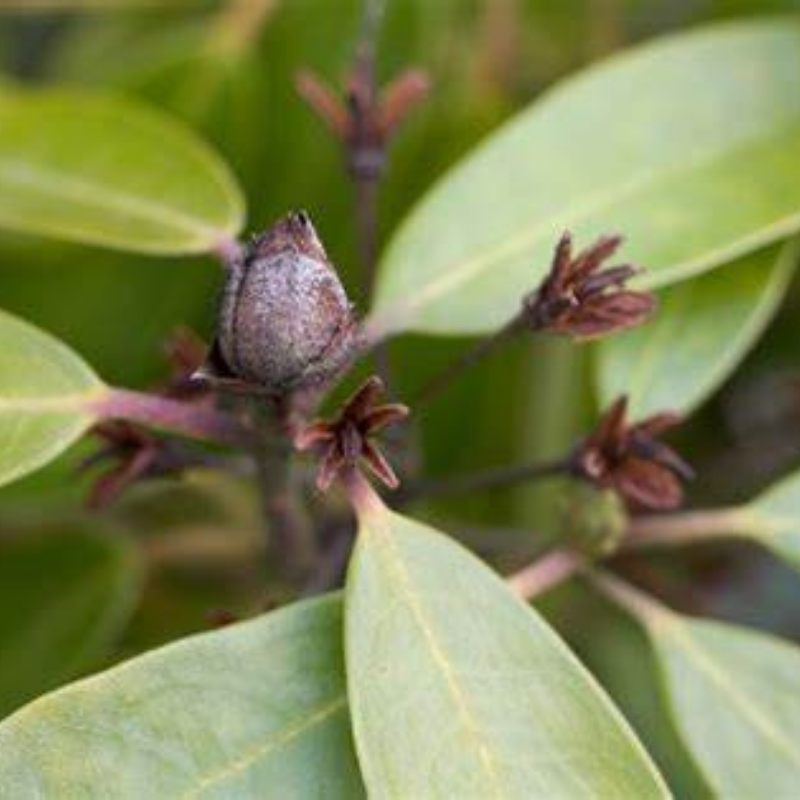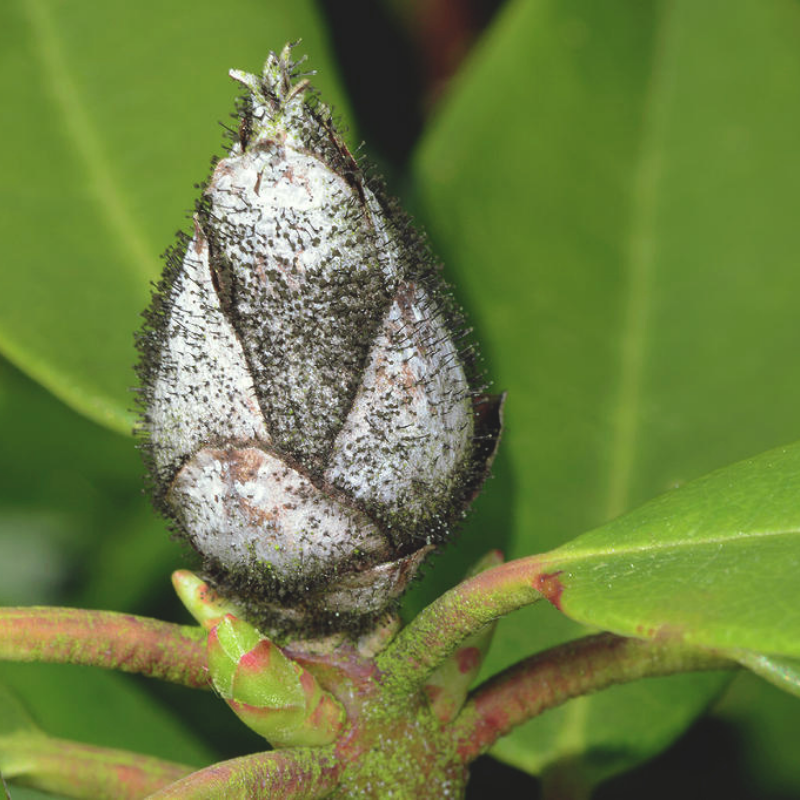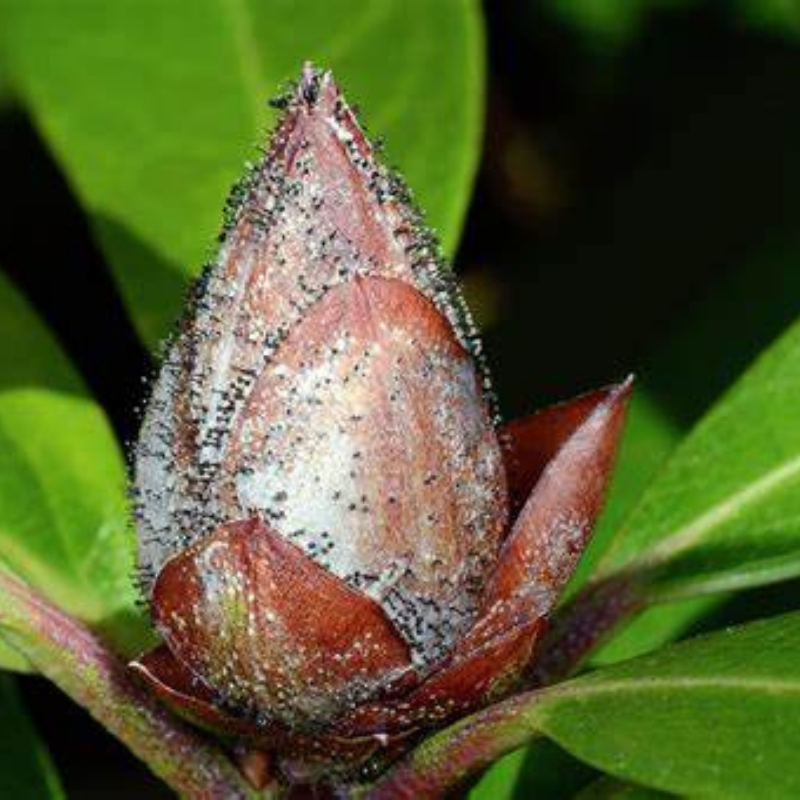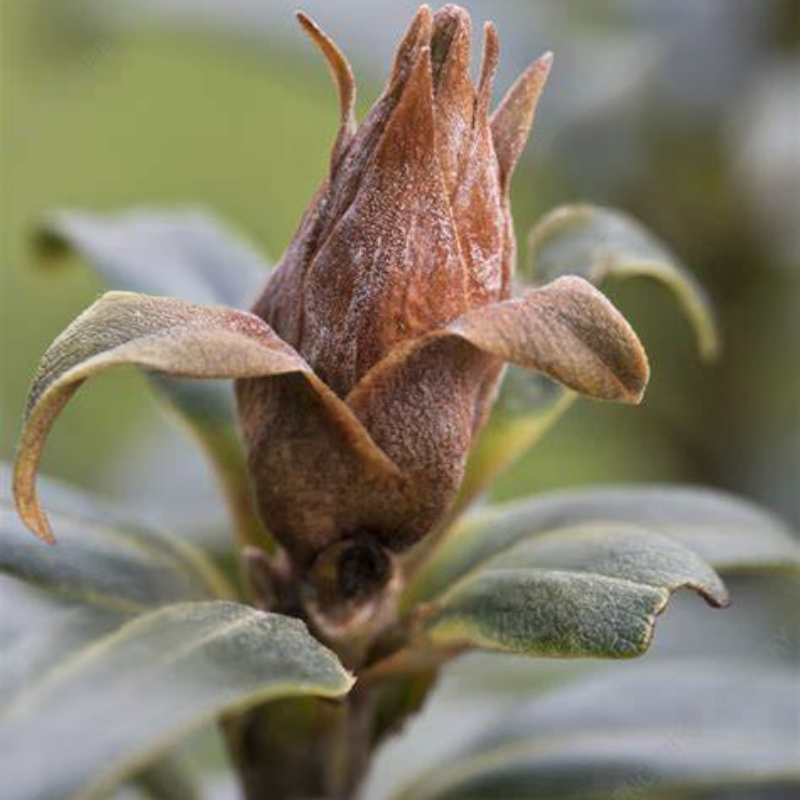Bud Blast in Rhododendrons
Bud blast is a common fungal disease in rhododendrons that primarily targets the flower buds, preventing them from blooming. The disease is caused by the fungus Seifertia azaleae, which results in the death of developing buds. Affected buds may turn brown, black, or silvery grey, depending on the variety, and will eventually dry out, but they remain attached to the plant, becoming unsightly. Over time, these buds develop small black fungal bristles (setae) that cover them, which is one of the tell-tale signs of bud blast.
Symptoms and Appearance
The most distinctive symptom of bud blast is the discoloration and death of flower buds, while leaf buds remain unaffected. Buds turn brown or black and fail to open in the spring. The dead buds persist on the plant throughout the year, becoming a potential source of infection for future seasons. As the disease progresses, the buds take on a silvery-grey appearance and may be covered in short, hair-like fungal growths.
Leafhopper Involvement
Historically, the rhododendron leafhopper (Graphocephala fennahi) was thought to play a major role in spreading the fungus. However, recent research suggests that while leafhoppers may carry the spores, their impact on the disease is not as significant as once believed. The fungus can enter the buds through wounds made by insects or possibly between the bud scales as they develop.
Environmental Stress and Other Factors
Bud blast can be exacerbated by environmental conditions such as high humidity, poor air circulation, and wet weather. Frost damage can also cause buds to turn brown and fail to open, but cold injury does not typically result in the fungal bristles seen with bud blast. Ensuring proper air circulation and avoiding overhead watering can help reduce the conditions that favor fungal growth.
Pruning and Sanitation
The most effective way to manage bud blast is through regular sanitation. Affected buds should be promptly removed and destroyed to prevent the spread of fungal spores. Pruning the plant to improve airflow can also help minimize the risk of infection.
Fungicide Treatment
In some cases, applying a fungicide such as copper oxychloride when flower buds are developing has proven effective in controlling bud blast. However, cultural controls such as maintaining healthy plant conditions and good garden hygiene should be the first line of defense.
While bud blast does not usually affect the overall health of the rhododendron, it can result in a significant loss of blooms, reducing the plant’s ornamental value for the season. By understanding the symptoms and causes of bud blast, gardeners can take proactive steps to prevent and manage this fungal disease, ensuring healthier blooms in the following seasons.




